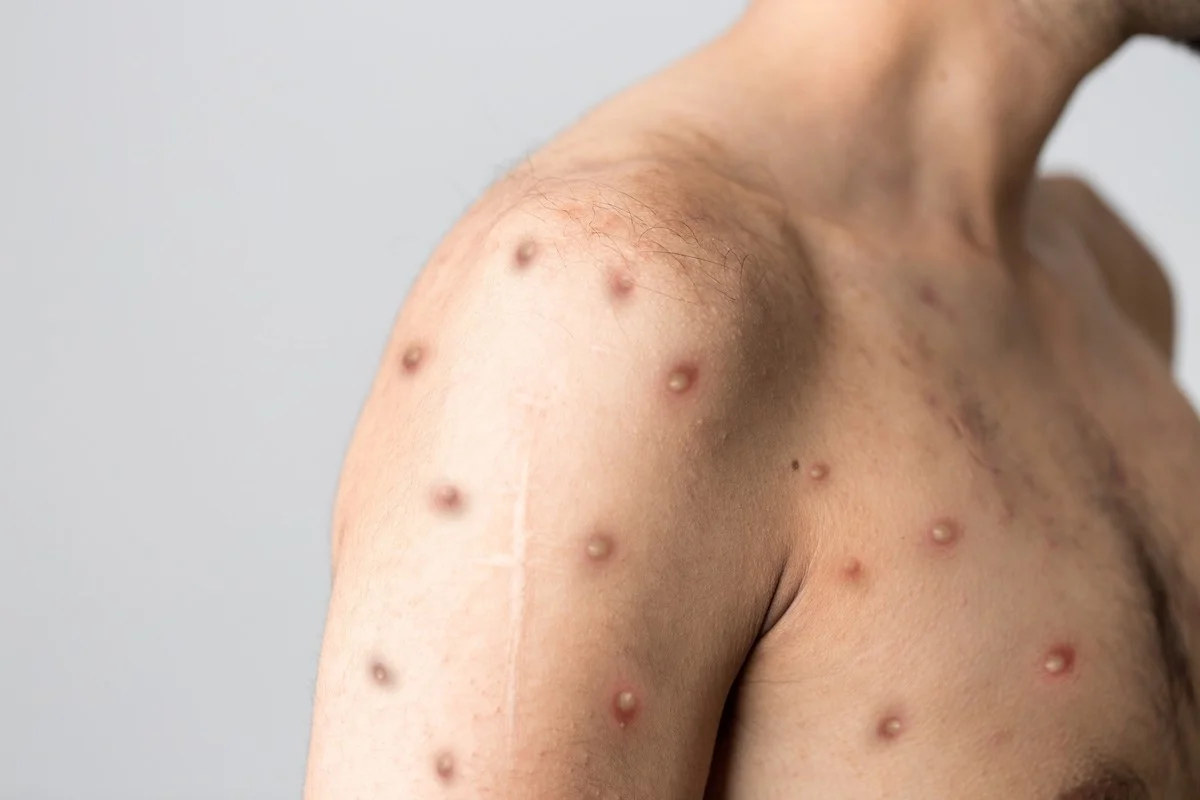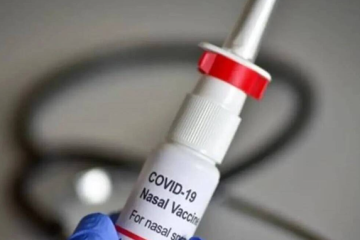Monkeypox occurs mainly in forested rural areas of Central and West Africa. Since the end of smallpox vaccination, the increasing frequency of reported cases and outbreaks has raised concerns about the future spread of the disease. Despite the high risk in endemic areas, monkeypox is still underrecognized and underreported. Optimal supportive care is important to improve the clinical course of monkeypox and prevent the most serious complications for affected individuals.
What Is Monkeypox? Monkeypox Virus
Monkeypox is a rare disease caused by the monkeypox virus. This leads to a rash and flu-like symptoms. Like the more well-known virus that causes smallpox, it belongs to the orthopoxvirus family.
Monkeypox was discovered in 1958 after two outbreaks of smallpox-like diseases occurred in groups of monkeys used for research. It is primarily transmitted through human contact with infected rodents, but can sometimes also be transmitted through skin contact with an infected person. There are two known clades of monkeypox virus – one that originated in Central Africa and one that originated in West Africa. The current global outbreak (2022) is caused by the less severe West African group.
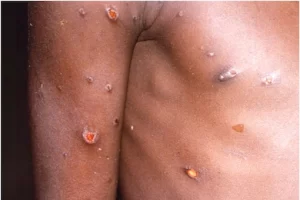
How common is the monkeypox virus?
Monkeypox is rare. But the number of cases is increasing in Africa and in regions where these infections have never been seen.
Where else does monkeypox occur?
For decades, monkeypox was primarily seen in Africa. However, it is occasionally found in other countries, including the United States. In the spring of 2003, the first outbreak of monkeypox outside of Africa occurred in the United States. A shipment of infected animals from Ghana was imported into Texas. Infected rodents spread the virus to domesticated prairie dogs, which then infected 47 people in the Midwest.
As international travel becomes more common, viruses that used to be limited to specific locations can spread more easily around the world. In the summer of 2021, a case of monkeypox was diagnosed in a US citizen who had traveled to the United States from Nigeria. Then the year 2022 brought the outbreak to areas outside of Africa, including Europe, America and Australia.
According to a study in the New England Journal of Medicine, monkeypox spread primarily from person to person during the 2022 global outbreak. Researchers found that 98% of people diagnosed with monkeypox between late April and late June 2022 were gay or bisexual men. Researchers suspected that 95% of those infected transmitted the virus through sexual activity.
Monkeypox can also be transmitted from animals to humans. Infected animals can transmit the virus when they bite or scratch you. It’s not clear if dogs and cats can be infected, but the CDC says you should assume any mammal can get monkeypox.
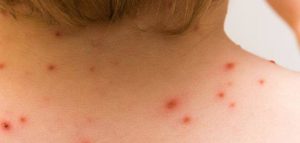
The agency says it’s possible that infected people can transmit monkeypox to their pets through:
- Petting
- Cuddling
- Hugging
- Kissing
- Licking
- Sharing sleeping areas
- Sharing food
If you have monkeypox, stay away from wildlife and pets to avoid spreading it to them. If you have pets, ask someone else to take care of them until you’re fully recovered.
You can also get monkeypox if you eat raw contaminated meat.
The virus can enter your body through a crack in the skin (which you may not even know you have), or through your mouth, nose, or eyes. You can breathe it in, but you’ll probably need to be in close contact for a while. This is because most drops do not travel very far.
Monkeypox is not technically considered a sexually transmitted infection (STI) because you can get it through other types of contact. But people infected with monkeypox can transmit it through sex.
Who gets affected by monkeypox?
Monkeypox can happen to anyone. In Africa, most cases occur in children under the age of 15. Outside Africa, the disease seems to be more common in men who have sex with men, but there are many cases that do not fall into this category.
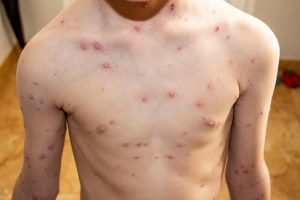
What are the signs and symptoms of monkeypox virus?
After exposure, it may take several days to a few weeks for you to develop symptoms. The initial symptoms of monkeypox are flu-like symptoms such as:
- Fever
- To Get Cold
- Headache
- Muscle Cramp
- Fatigue
- Swollen Lymph Nodes
The rash often develops after a few days. The rash begins as flat, red bumps that can be painful. These bumps turn into blisters that fill with pus. Eventually, the blisters will crust and fall off – the whole process can take two to four weeks. You may also have sores in your mouth, vagina, or anus.
Not everyone with monkeypox develops all symptoms. Indeed, in the current outbreak (2022), many cases do not follow the usual pattern of symptoms. This unusual appearance includes few sores, no swollen lymph nodes, low fever and other signs of illness. You can have it and not know it. But even if you don’t show many signs of infection, you can still spread it to others through prolonged close contact.
How do you get monkeypox?
Monkeypox is spread when you come into contact with an animal or a person infected with the virus. Animal-to-human transmission occurs through broken skin, e.g. By a bite or scratch from an infected animal, or by direct contact with blood, body fluids, or sores (sores) of smallpox.
Monkeypox can be spread from person to person but it is less common. Human-to-human transmission occurs when you come into contact with an infected person’s sores, scabs, respiratory droplets, or oral fluids, usually through close, intimate situations such as hugging, kissing, or sex. Research is ongoing, but researchers are unsure whether the virus is transmitted through semen or vaginal fluid.
You can also get monkeypox if you have recently come into contact with contaminated materials, such as clothing, bedding, and other bedding used by an infected person or animal.
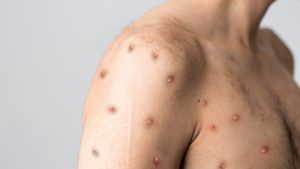
Diagnosis And Testing
How Is Monkeypox Diagnosed?
Because monkeypox is rare, your doctor may first suspect other skin rash conditions, such as measles or chickenpox. But swollen lymph nodes usually distinguish monkeypox from other types of chickenpox.
To diagnose monkeypox, your doctor takes a tissue sample from an open wound (lesion). They then send it to a lab for polymerase chain reaction (PCR) testing (genetic fingerprinting). You may also need to give a blood sample to check for the monkeypox virus or antibodies made by your immune system.
administration and treatment
Is monkeypox curable?
Monkeypox is usually a self-limiting disease with symptoms lasting two to four weeks. Most people with monkeypox get better on their own without treatment. Once diagnosed, your doctor will monitor your condition and try to relieve your symptoms, prevent dehydration, and give you antibiotics to treat secondary bacterial infections if they develop.
There is currently no approved antiviral treatment for monkeypox. Antiviral drugs can help, but they have not been studied to treat monkeypox. Several investigational antivirals with activity against monkeypox are available, but only as part of a research study.
Remedy
How Do You Prevent The Monkeypox Virus?
The smallpox vaccine provides protection against monkeypox, but its use is currently limited to clinical trials. Prevention depends on minimizing human contact with infected animals and limiting human-to-human transmission. The best way to stop the spread of monkeypox virus is:
- Avoid contact with infected animals (especially sick or dead animals).
- Avoid contact with bedding and other materials contaminated with the virus.
- Thoroughly cook all foods containing animal meat or parts thereof.
- Wash your hands frequently with soap and water.
- Avoid contact with people who may be infected with this virus.
- Practice safe sex, including using condoms and rubber dams.
- Wear a mask that covers your mouth and nose when around others.
- Clean and disinfect frequently touched surfaces.
- Use personal protective equipment (PPE) when caring for people infected with the virus.
How do I take care of myself?
- If you have monkeypox symptoms, over-the-counter medicines can help you feel better, including:
- painkillers and fever reducers. Medications like ibuprofen (Advil®, Motrin®) and acetaminophen (Tylenol®) can help you feel better.
- oatmeal bath. Soaking in a warm bath with colloidal oatmeal can provide relief from dry, itchy skin associated with rashes.
- If you are infected, isolate yourself. Avoid contact with others until all your wounds have been scratched.
- Cover single or local lesions. Use gauze or bandages to limit spread to others and the environment.
- Good care It’s important to stay home and rest when you’re sick, wear a mask when you’re with others, and drink plenty of fluids.
- Avoid contact with pets (especially rodents).
- When should I see my doctor?
Call your doctor if you:
- Nausea with fever, pain, or swollen lymph nodes.
- Have a new rash or sores.
- had close contact with an infected person.
- When should I go to the emergency room?
- See a doctor if you develop the following symptoms:
- Difficulty Breathing
- New Or Worsening Chest Pain
- Stiff Neck
- Are Confused Or Unable To Think Clearly
- Difficulty Speaking Or Moving
- Fainting
- Trip
Course duration: approx. 3 hours.
What Is The Difference?
Monkeypox Vs Chickenpox
Although both cause skin rashes, monkeypox and chickenpox are caused by different viruses. Monkeypox is an orthodox virus while chickenpox is a herpes virus. Both viruses can be transmitted through skin-to-skin or prolonged personal contact, but chickenpox is highly contagious and spreads more easily than monkeypox. People with monkeypox are more likely to have swollen lymph nodes than people with chickenpox.
Rashes also look different. While chickenpox rash can appear in waves, monkeypox lesions develop at the same time. Chickenpox symptoms — including the rash — usually improve within two weeks, while monkeypox takes two to four weeks to heal

